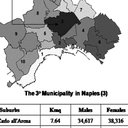Genes coding for LysM domains in the dermatophyte Trichophyton rubrum: A transcription analysis.
Słowa kluczowe
Abstrakcyjny
The filamentous fungus Trichophyton rubrum is a pathogen that causes superficial mycoses in humans, predominantly in keratinized tissues. The occurrence of dermatophytoses has increased in the last decades, mainly in immunocompromised patients, warranting research on the mechanisms involved in dermatophyte virulence. The genomes of dermatophytes are known to be enriched in genes coding for proteins containing the LysM domain, a carbohydrate-binding module, indicating the possible involvement of these genes in virulence. Although the LysM domains have already been described in other fungi, their biological functions in dermatophytes are unknown. Here we assessed the transcription of genes encoding proteins containing the LysM domains in T. rubrum grown on different substrates using quantitative real-time polymerase chain reaction. Some of these genes showed changes in transcription levels when T. rubrum was grown on keratin. In silico analyses suggest that some of these proteins share features, namely, they are anchored in the plasma membrane and contain the catalytic domain chitinase II and signal peptide domains. Here we show a detailed study of genes encoding the proteins with LysM-containing domains in T. rubrum, aiming to contribute to the understanding of their functions in dermatophytes.


